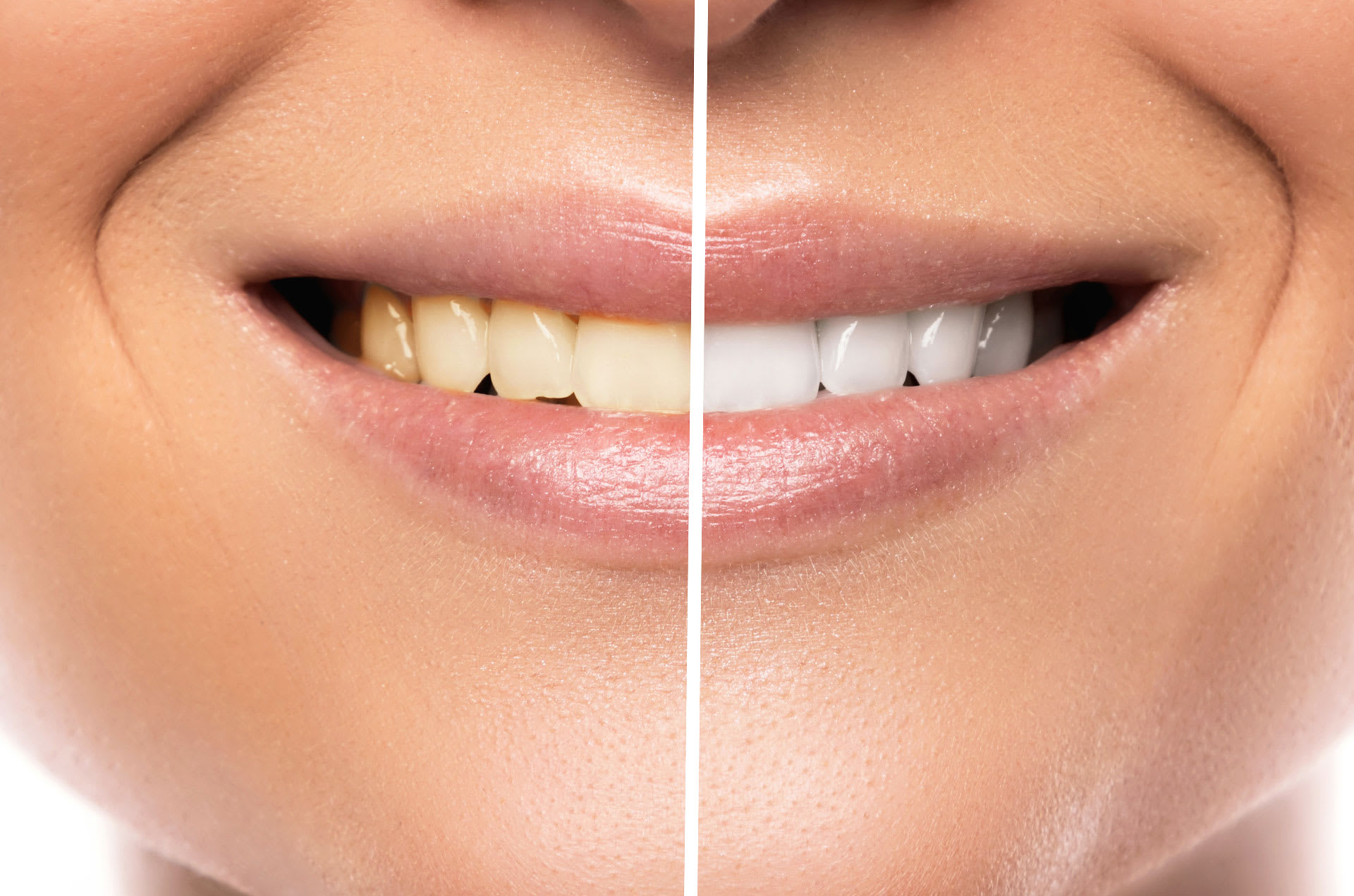
Do I have a beautiful smile? Are my teeth too yellow? What is the normal color of teeth? How to whiten my teeth without damaging them? Does teeth whitening work?
If you are reading this article, chances are that you already asked these questions.
Many consider whiter teeth a measure for attractiveness. The normal colour of teeth usually ranges between light greyish to yellow, organ or brown depending on the presence of any surface stain and the composition of teeth.
Surface stain mostly results from food, drinks or habits. Almost all food and drinks have some sort of coloring material e.g. carrots, coffee, tea, wine, soft drinks, tobacco etc. Some over-the-counter products have abrasive properties to remove surface stain. However, the efficacy of these agents is limited to the stain at the outer layer of the teeth. These products do not alter the color of the tooth itself.
The composition of teeth affects its color. Enamel is the outer semi-transparent layer. Dentin is the inner opaque layer. Whitening agents are designed to change the color of the tooth. These products can be applied in the dental office or at home.
For in office whitening, a whitening agent will be applied on your teeth over few sessions (usually 1-3 sessions). The advantage of inoffice whitening is rapid results.
But how to whiten your teeth at home? For at-home teeth whitening, a tray will be fabricated to fit your teeth. Your dentist will provide you with a whitening agent. Some products can be applied at home for few minutes and others for few hours. The advantage of at home whitening is the ability of the consumer to have control over the whitening process.
Many whitening products are available to the general public without the supervision of dentists. However, there is no way to predict how to whiten your teeth at home with these products will turn out.
The application of approved whitening agents as intended is safe. Teeth sensitivity after whitening is common, but it varies among individuals. To reduce teeth sensitivity, the consumer can try anti-sensitivity products, increase the interval between sessions for in office whitening, or wear the whitening tray less frequently for at home whitening. In addition, irritation to the gums is possible while teeth whitening in the dental office or at home. Furthermore, white opaque spots could appear after teeth whitening because of less dense enamel. These spots usually disappear after discontinuation of the whitening agent. Finally, the shade of teeth after whitening cannot be predicted and it is not permanent. Regardless of the whitening method, the long term stability of shade is unknown.
It is worth mentioning that the color of restorations (e.g. fillings, crowns) does not change with teeth whitening. As a result, replacement of these restorations isoften needed. Also, teeth with root canal treatment might require the dentist to apply the whitening agent inside the tooth using specific techniques. Although tooth whitening is considered a cosmetic procedure, a consultation with a dentist is essential. The dentist can determine how to whiten your teeth the best possible way to achieve optimal results.
